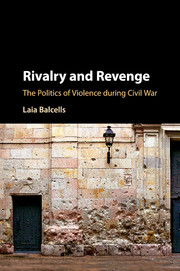1 - Violence Against Civilians During Civil Wars
from PART I
Published online by Cambridge University Press: 18 May 2017
Summary
PUZZLE AND STATE OF THE ART
Between mid-July 1936 and February 1939, for nearly the entire duration of the Spanish Civil War, La Cerdanya, a region in northern Catalonia bordering France, was under the control of the Republican (also called Loyalist) army. Between July 1936 and May 1937, anarchist militiamen patrolled the area, under the leadership of Antonio Martín, nicknamed Cojo de Málaga. In Puigcerdà, the county town, the anarchists executed over 30 individuals, while some kilometers away, in the second largest village of the county, Bellver de Cerdanya, significantly fewer were executed: three. In Das, a tiny village of 200 inhabitants located a few kilometers from Puigcerdà, the militia executed four citizens; over the same period, in Llívia, a village of a similar size, located at a similar distance from Puigcerdà, not a single civilian was assassinated. Why did the anarchist militiamen kill civilians behind the frontlines, and why did they carry out executions in some places and not others? The two most prominent explanations of civil war violence point to factors such as the degree of military contestation and the organizational characteristics of groups. These explanations are insufficient to explain the violence that was carried out by the anarchists in La Cerdanya: during this period there was no combat in this area and the Nationalist (also called Francoist or rebel) army had no presence in this area, so this violence was not the result of military competition between armed forces. At the same time, the militias patrolling this area were all composed of the same men and led by the same person, so the (undisciplined) nature of the armed organization cannot really account for this variation either.
When the Franco-led coup failed and the civil war broke out between rebels and loyalists, anarchists and communists – who were on the loyalist side – were eager to seize the moment and start “the Revolution” in Spain. For some of these left-wing militants, eliminating counterrevolutionaries was a necessary measure to accomplish the ultimate goal of the revolution. But, most importantly, eliminating them was regarded as a crucial measure in a civil war in which both sides were highly mobilized and right-wingers could easily develop into a military threat.
- Type
- Chapter
- Information
- Rivalry and RevengeThe Politics of Violence during Civil War, pp. 3 - 18Publisher: Cambridge University PressPrint publication year: 2017



